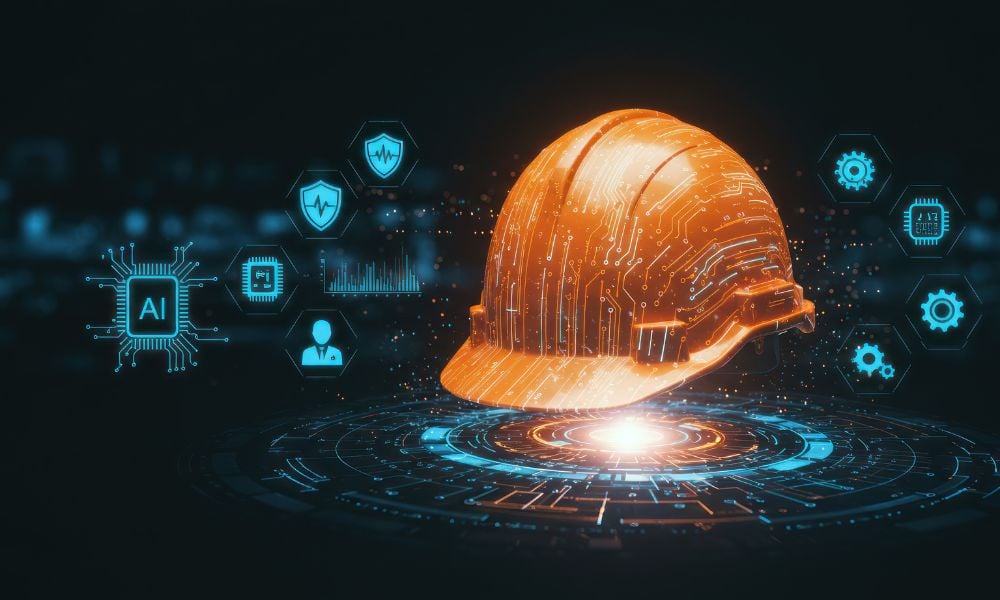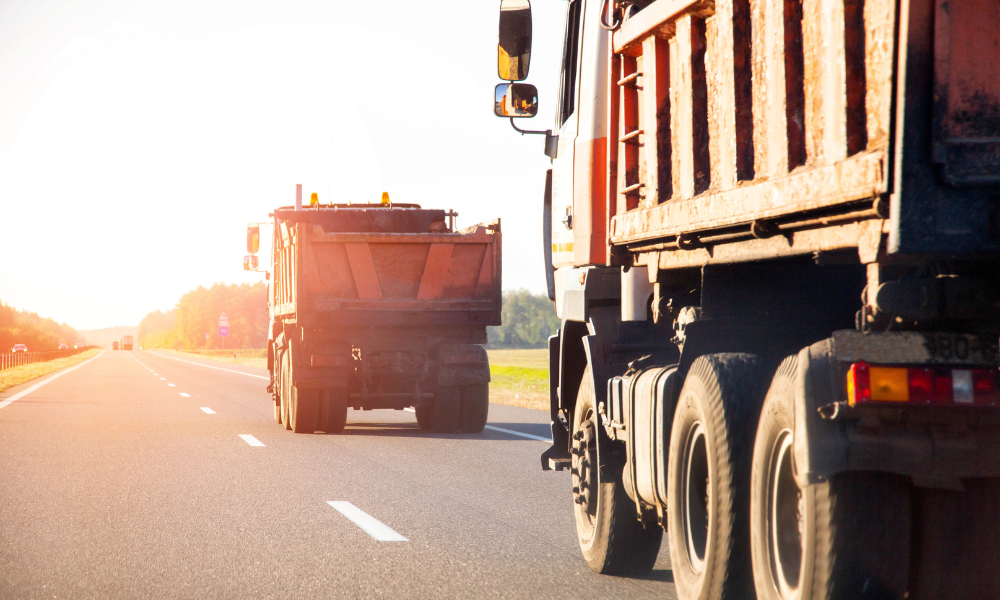Tips for using emerging technology to prevent serious injuries and fatalities

Imagine if every safety meeting, every incident report, every culture survey you've collected over the past decade could have a conversation with each other. What patterns would emerge? What early warnings have we missed? Now imagine if this conversation could extend to what's happening right now—every near miss detected in real time, every unsafe behavior observed as it occurs, every deviation from procedure captured as it happens.
That's what AI-powered safety intelligence makes possible.
We're sitting on goldmines of organizational wisdom, but it's trapped in silos. Your incident reports don't talk to your culture surveys. Your near miss trending doesn't inform your major incident investigations. Your toolbox talks don't compare notes with your near miss data. Your real-time observations aren't connected to your historical patterns.
Until now.
The uncomfortable gap in safety progress
Workplace safety has made remarkable strides in recent decades, with significant reductions in overall recordable incident rates. However, serious injuries and fatalities (SIFs) have declined at a much slower pace. This presents a challenge: how do we move beyond reducing minor incidents to actively eliminating life-altering events? The key lies in understanding and proactively addressing SIF precursors through robust near miss and incident reporting and analysis enhanced by AI.
Preventing serious injuries and fatalities
Many organizations use near miss reporting as a leading indicator to track proactive safety activities and identify potential problems. Near misses help identify hazards, poor barriers, and opportunities for improvement.
For decades, Heinrich's safety triangle theorized that reducing non-injury incidents would reduce major injuries and fatalities. However, his theory was flawed: not all incidents could lead to fatalities. Only a smaller proportion of near misses could lead to serious injuries or fatalities.
Preventing SIFs isn't about treating all incidents the same. It's about recognizing which events reveal the cracks in safety barriers.
Challenges of near miss reporting
Traditional near miss reporting faces significant challenges. Many incidents go unreported because workers fear personal consequences, stigma, or judgment from peers. When reporting processes are tedious, employees become discouraged. Additionally, workers and managers often lack clarity on which precursors to report, leading to underreporting or poor-quality data.
The fundamental challenge remains: treating all incidents equally diverts attention from those with serious potential, causing organizations to focus on frequent minor items instead of crucial life-altering precursors.
AI: A powerful ally in analyzing safety data
Effective safety initiatives require data collection and analysis that is mindful, targeted, and provides useful, actionable information. Unfortunately, most of this data goes unseen because we don't have the staff to see everything and we don't have the 'fresh eyes' to see risks that we walk by everyday. We typically don't see what happens with a lone worker or the goings-on during night shift.
This is where transformation begins. AI bridges organizational silos, revealing patterns invisible to human analysis. Think of AI not as replacing human wisdom, but as a translator helping different parts of your organization speak the same language. Whether analyzing a minor near miss or investigating a recordable incident, AI finds the connections that matter, treating every event as a learning opportunity that could prevent future tragedies.
Safety professionals are overwhelmed with data, and near miss analysis often falls behind other duties. AI changes this by processing large volumes from disparate sources, transforming an impossible task into actionable intelligence. It becomes the connective tissue between isolated data streams, revealing how each element influences the others.
Connecting data across the organization
Imagine a tool that can help you see risk objectively. Imagine a tool that can see at-risk conditions and behaviors when no one else is there to see them. AI can enable us to see the unseeable.
AI analyzes near miss reports alongside other data to uncover hidden trends and provide insights into specific precursors and systemic weaknesses likely to lead to SIFs:
• Shift patterns: Correlating specific shifts or times with near miss types
• Machine or equipment data: Pinpointing recurring equipment issues that indicate potential failures
• Leader behavior: Identifying gaps in coaching, hazard awareness, or communication
• Safety culture data: Detecting normalized deviation or uncalibrated risk perception
• Training records: Linking incidents to training gaps or lapses
• Maintenance compliance: Connecting incidents to overdue maintenance
• Audit findings: Relating precursors to systemic issues
• Historical incidents: Learning from past events across all severity levels to identify recurring patterns
By analyzing these interdependencies, AI uncovers correlations manual analysis would miss, providing deep insights into SIF precursors specific to each organization's context.
Three examples of systems to aid in data collection and analysis
AI technologies revolutionize safety data collection and analysis, moving beyond traditional methods to capture invisible patterns. Some systems use computer vision to identify unsafe conditions in real time. Others enhance near miss and incident investigation to ensure thorough analysis across all severity levels. These approaches share a common goal: uncovering patterns human observation misses.
SafetyControl by Assia uses computer vision to monitor airline ramp operations, detecting standard operating procedure (SOP) deviations like improperly parked aerobridges or safety zone violations. The system provides real-time alerts to operational agents while generating data for root cause analysis. It also has the ability to identify proper safety practices so that human managers can reinforce the right behaviors.
Viso Suite applies AI-powered near miss detection across manufacturing and other industries. Using existing surveillance cameras, it processes video feeds to recognize and assess near misses as they happen, enabling rapid response to emerging risks.
MineGuard AI offers a comprehensive platform originally developed for the mining industry that now serves multiple sectors. Their IncidentAI solution applies multiple investigation frameworks, including HOP concepts, to dramatically reduce investigation time from days to minutes while revealing deeper organizational patterns. The platform features predictive hazard detection through advanced video analytics and integrates safety considerations directly into digital twin environments, enabling proactive safety scenario modeling.
Learning, not policing
AI's ultimate goal in safety is learning and systemic improvement, not policing and "fixing the worker". Organizations should improve safety management system gaps rather than focus on individual errors. Corrective actions must address systemic issues like error traps and organizational weaknesses.
A strong reporting culture requires people to feel safe providing information without fear of blame. The focus must be on understanding why deviations occurred and how systems can be improved.
Human review
While AI automates data collection and analysis, effective use requires human expertise. Whether AI flags hazards in video feeds or reveals investigation patterns, humans must review the data to identify root causes and contributing factors, and inform corrective actions.
Risk calibration remains a human process requiring discussion and agreement on priorities. AI provides visibility and insights, but interpretation, learning, and systemic improvements are human responsibilities.
Call to action
Modern AI technologies offer powerful allies in reducing injuries and preventing SIFs. From computer vision detecting unsafe conditions to analytical tools uncovering hidden patterns, AI enables comprehensive analysis beyond human cognitive limits. However, this technology must support deep analysis and systemic improvements, not individual policing.
AI's ability to analyze vast datasets reveals subtle correlations humans miss. Applied across safety data—from real-time observations to historical reports—it creates comprehensive safety intelligence that enhances proactive capabilities.
Organizations must foster cultures where all reporting is encouraged for learning. Data must identify root causes, contributing factors, address system gaps, and implement controls making safety less dependent on individual behavior.
The journey to safety excellence requires continuous improvement, and leveraging AI for comprehensive analysis is key to preventing serious incidents. Organizations must embrace AI to enhance safety intelligence, prioritize SIF potential analysis, and drive systemic changes creating safer workplaces.
Your organizational data has been trying to tell you a story for years. AI simply gives it a voice. The question isn't whether to listen, but whether you're ready to hear what it has to say.





